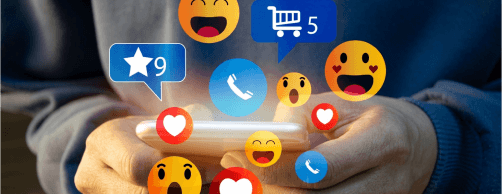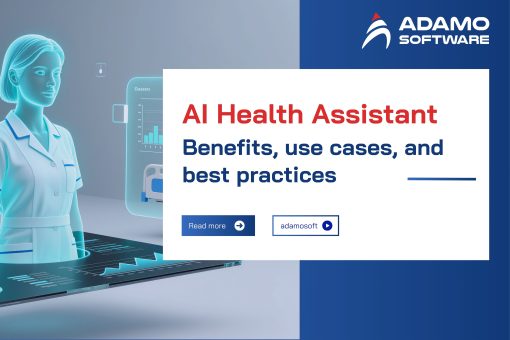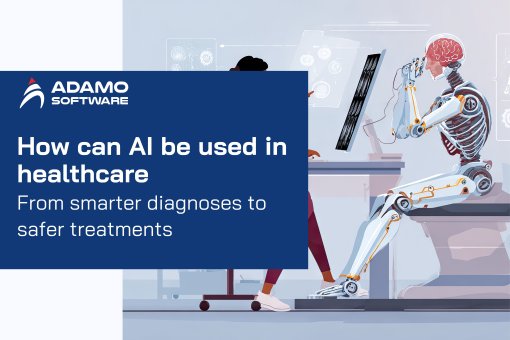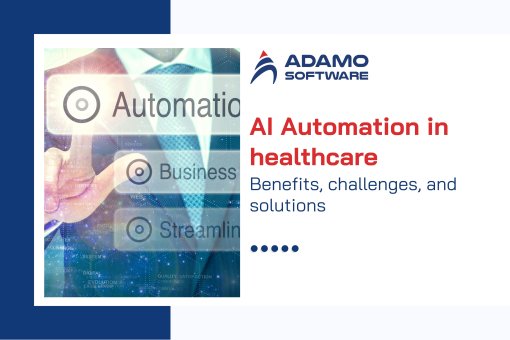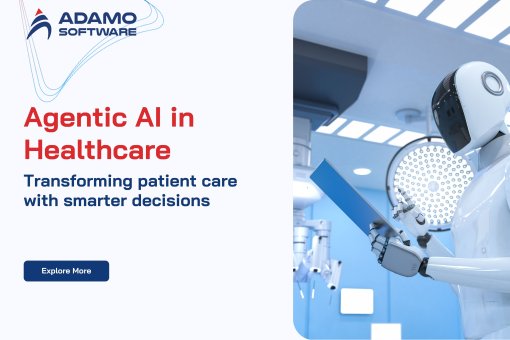Top 10 common Types of Healthcare Software and trends for 2026
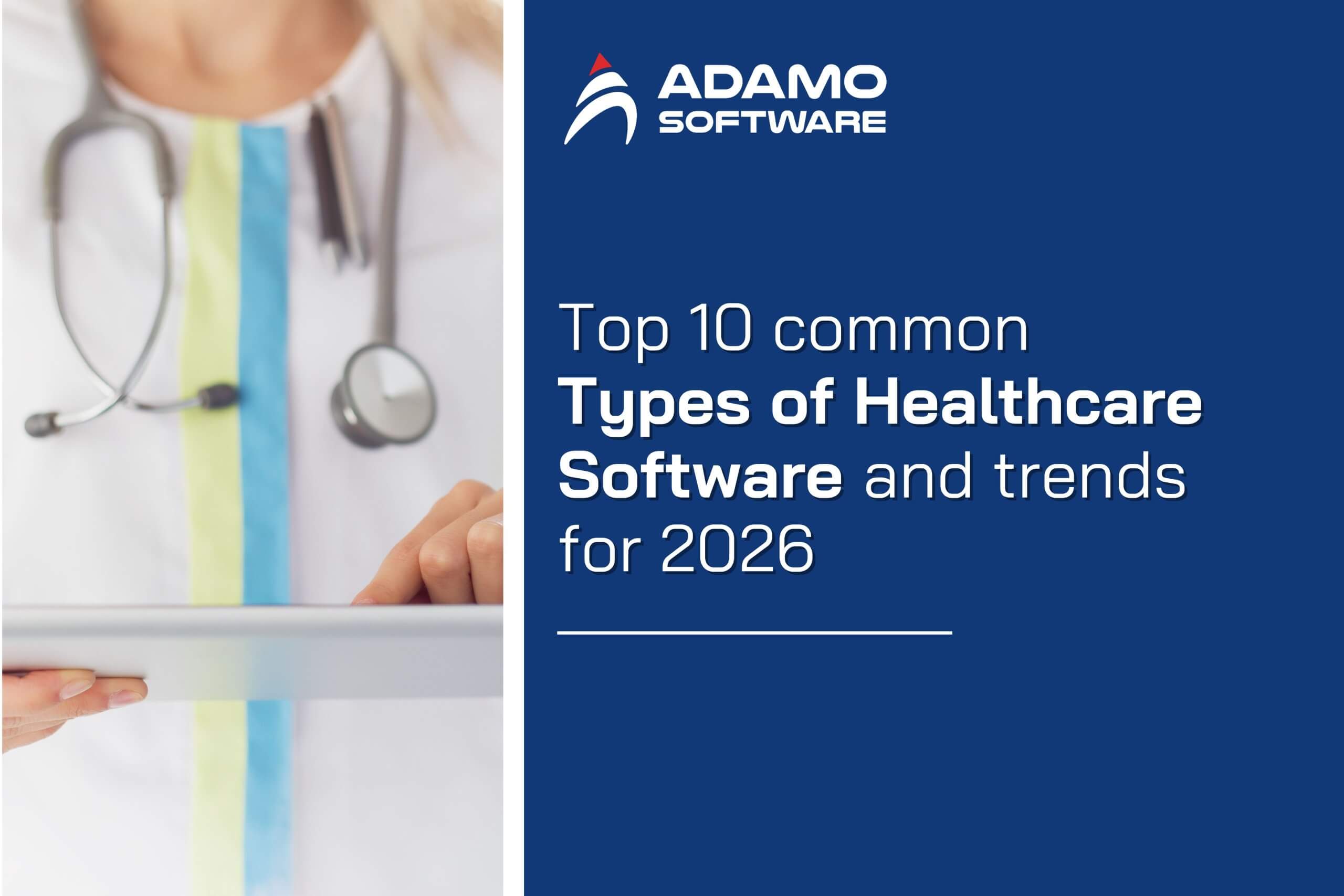
Explore 10 types of healthcare software and 5 future trends to transform hospitals, improve efficiency, and guide your digital health strategy.
The global healthcare industry is entering a period of substantial transformation with the support of technology. According to a report by Deloitte, more than 92% of healthcare providers are investing in healthcare software to improve operational efficiency and treatment quality. However, choosing the right types of healthcare software that suits the scale, budget, and development goals is still a complex problem for many hospitals, clinics, and healthcare organizations.
With the increasing diversity of healthcare software types – from medical record management to AI diagnosis, each type brings unique value to the healthcare system. The following article will help you:
- Discover the 10 most popular and necessary types of healthcare software.
- Update 5 outstanding healthcare software development trends in 2025 and the following years.
- Answer frequently asked questions (FAQs) about integration, deployment, and selection of development partners.
Whether you are a hospital manager, an IT expert in the healthcare industry, or a HealthTech startup developing a product, this is a comprehensive guide to help you orient and update trends in choosing and deploying types of healthcare software effectively.
I. 10 Main types of healthcare software used in hospitals
Choosing the right types of healthcare software is increasingly becoming a vital factor in improving the efficiency of treatment and hospital operations. As options become more abundant, but time and resources are limited, many medical facilities are still struggling in the process of digital transformation.
Below are 10 key types of medical software that modern hospitals and clinics need to pay attention to:
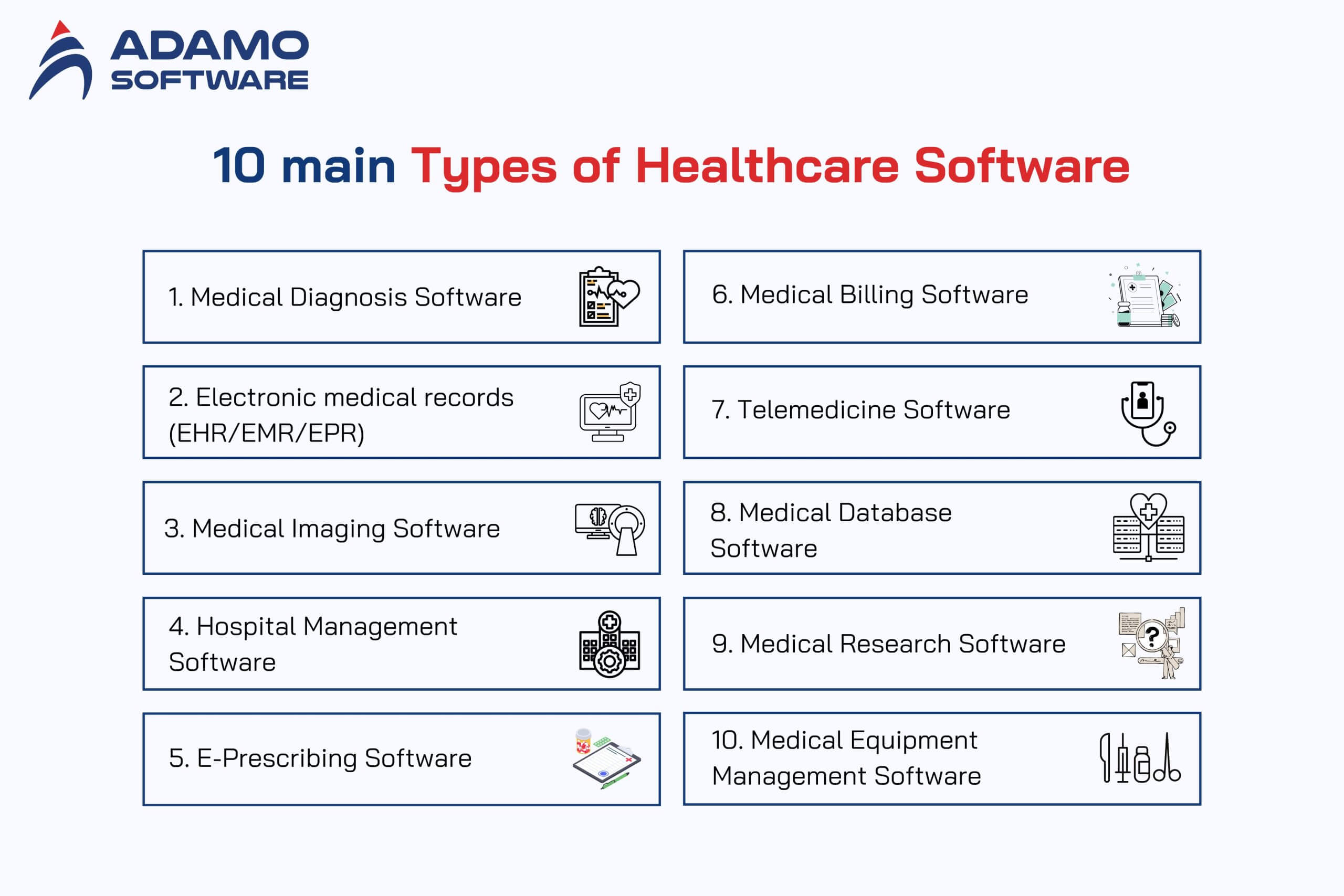
- Electronic medical records (EHR/EMR/EPR): Centralize the comprehensive storage of patient medical information and support continuous treatment.
- Medical database software: Classify diseases by diagnosis and help doctors look up and analyze similar cases.
- Hospital management software: Support appointment coordination, record storage, appointment reminders, and financial report synthesis.
- Diagnosis support tools: Apply AI to analyze symptoms and make quick clinical judgments.
- Medical imaging software: Process data from MRI, CT, ultrasound machines, etc., to support treatment planning.
- Electronic prescription: Send prescriptions directly to pharmacies, ensuring confidentiality and accuracy.
- Research support system: Synthesize scientific documents and clinical results for in-depth research.
- Telemedicine software: Help patients connect with doctors via video, chat, or phone.
- Medical payment system: Manage invoices, track income and expenditure, and support connection with insurance.
- Medical equipment tracking software: Monitor machine status, warn of periodic maintenance, and optimize operating costs.
1. Medical Diagnosis Software
In many cases, misdiagnosis or delay can lead to serious consequences. Therefore, medical diagnosis software is becoming an important tool, supporting doctors in making more accurate decisions in a shorter time.
Most of today’s systems are integrated with artificial intelligence (AI), which can analyze symptoms, medical records, and suggest possible pathologies. Doctors can use this software to localize the disease, compare it with previous cases, or discuss it with other specialists on the same system.
According to a report from McKinsey, the application of AI in diagnosis can help reduce medical errors by up to 30% and significantly increase treatment efficiency. Among the many types of healthcare software, diagnostic tools like this play a critical role in improving patient safety and clinical outcomes.
2. Electronic medical records (EHR/EMR/EPR)
This is a familiar type of healthcare software and is almost mandatory in every modern hospital. EHR (electronic health record) allows the storage of all patient health information, from medical history, prescriptions, clinical indications, and examination history.
Unlike EMR, which only records data within a medical facility, EHR can be shared between multiple units, helping doctors monitor patients throughout the treatment journey. EPR (electronic patient record) is a form of local or cloud storage that depends on the patient’s needs.
According to statistics from the US CDC, more than 96% of hospitals in the US electronic medical records have deployed, showing that this is one of the most essential tools in the digital transformation of healthcare.
3. Medical Imaging Software
Medical imaging software is a critical example when talking about advanced types of healthcare software used in diagnostics today. It supports modern treatment by reproducing machine data in 2D, 3D, and 4D images.
This helps doctors plan more detailed treatment, while explaining the condition to patients visually and easily. Many systems today also allow editing, measuring images, and storing them in medical records for later monitoring.
4. Hospital Management Software
A modern hospital cannot operate effectively without an overall management system. As one of the essential types of healthcare software for streamlining operations, this tool helps manage administrative activities. This includes scheduling appointments, storing records, sending reminder messages, financial reporting, and evaluating service quality.
According to research by MarketsandMarkets, the global hospital management software market is expected to reach $33.7 billion by 2028, growing at an average rate of 11.5% per year. This reflects the increasing need for medical facilities to optimize processes and reduce staff workload.
5. E-Prescribing Software
There is no longer a scene where doctors write prescriptions by hand and then send them to staff to fill out the medication. With e-prescribing software, prescription information will be sent directly to the pharmacy, ensuring accuracy and confidentiality.
In addition, this type of healthcare software also supports saving doctor notes, warnings of drug interactions, and creating prescription history for easy tracking. This is a solution that both improves treatment efficiency and reduces the risk of medical errors.
6. Medical Billing Software
Financial work in hospitals is often complicated, with thousands of daily transactions. This is where medical billing software — one of the most practical types of healthcare software — becomes invaluable. It helps manage revenue and expenditure, automatically creates invoices, tracks debts, prints payment vouchers, and connects directly to the health insurance system.
The strengths of this software are the ability to customize according to hospital policy, create financial reports quickly, and support bill retrieval in seconds.
7. Telemedicine Software
The COVID-19 pandemic has been a substantial boost for the telemedicine industry. Patients can now see doctors via video, send test results online, and receive prescriptions via the app with just a few steps.
As one of the fastest-growing types of healthcare software, telemedicine platforms save time and travel costs — making them an ideal solution for remote areas or people with limited mobility.
According to Grand View Research, the global telemedicine market was valued at $87.41 billion in 2022 and is expected to reach $455 billion by 2030, with a growth rate of more than 24% per year.
It saves time and travel costs, and telemedicine is also an ideal solution for remote areas or people with limited mobility.
Ready to Outsource?
Get top-tier IT talent without the hassle. Contact us now!
8. Medical Database Software
Unlike EHR, which stores individual patient records, this software is classified by disease group, symptom, or protocol. It plays a critical role among the types of healthcare software that enables doctors to look up similar cases, analyze treatment progress, and give more accurate directions.
For example, doctors can find similar cases successfully treated and learn from them when faced with a rare cancer case. This is a tool to support decision-making based on data instead of emotions.
9. Medical Research Software
Medicine is constantly changing. Therefore, doctors and researchers need a platform that synthesizes scientific articles, clinical results, updated documents, and research software; that tool is that tool.
This type of software helps filter content by field, author, and medical trends… saving hours of manual research.
10. Medical Equipment Management Software
Finally, medical equipment monitoring software allows for operational logging, periodic maintenance alerts, and statistics on the operating time of each machine.
It may not be the first that comes to mind when thinking about types of healthcare software, but it’s critical in ensuring smooth, uninterrupted operations. Hospitals can proactively replace equipment before it breaks down, minimizing medical examination and treatment interruptions.
You can explore more about “Outsourcing Healthcare Software Development: When it works” here.
II. Healthcare Software trends for 2026 and beyond
Technology is changing how healthcare operates – from diagnosis and treatment to training and information management.
In addition to traditional software, such as medical records or hospital management, many extensive medical facilities invest in advanced technology solutions to maintain their position and stay ahead of the trend.
Below are five prominent medical software trends that are expected to continue to grow strongly in 2026 and beyond:
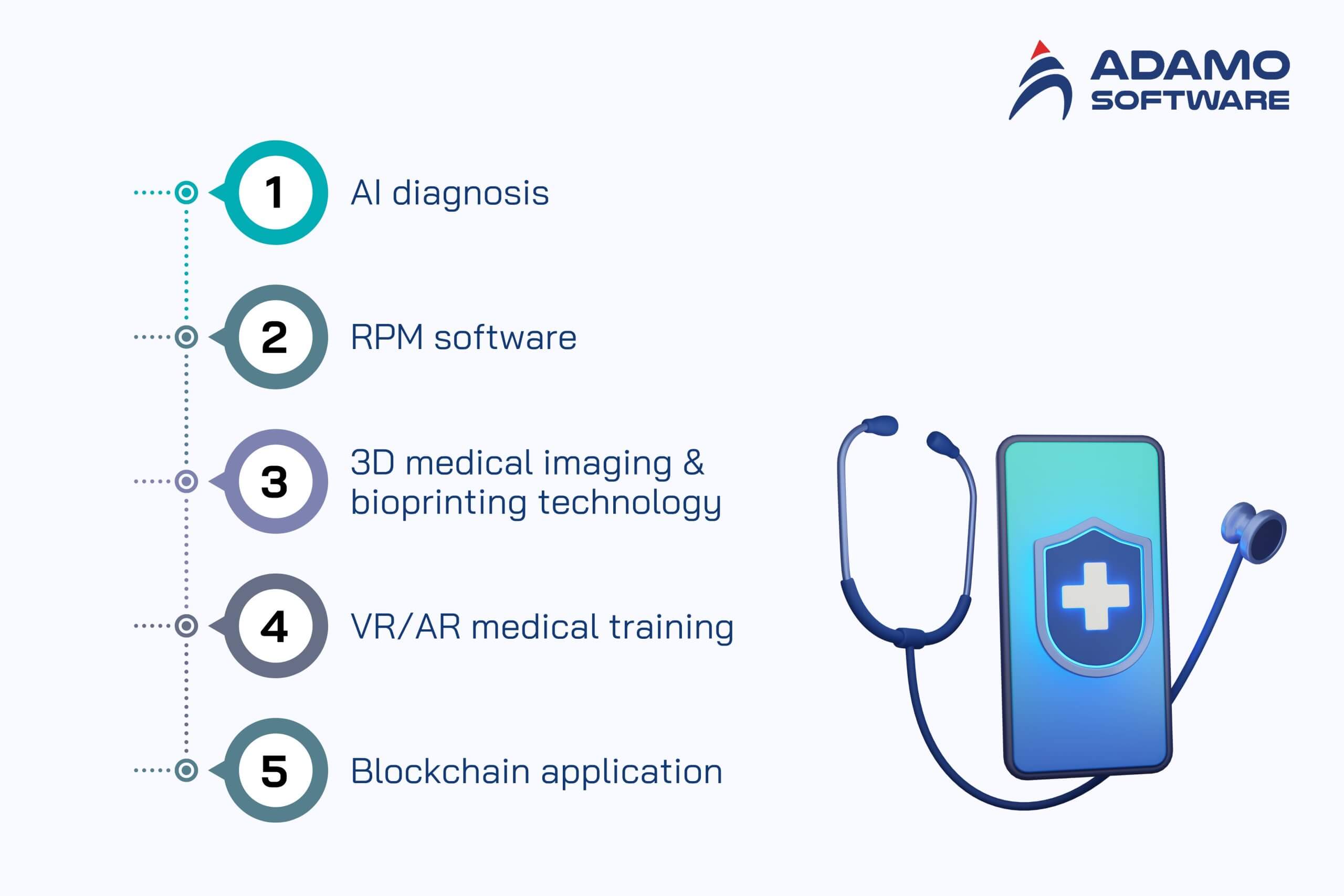
- AI-powered Diagnosis: Increase Speed and Accuracy in Clinical Diagnosis.
- Remote Patient Monitoring (RPM): Record Health Data via Smart Wearable Devices.
- Medical Simulation with 3D Imaging & Bioprinting: Serve Precision Surgery and Prosthetic Manufacturing.
- Virtual Reality (VR/AR) Medical Education: Help Students and Doctors Practice Clinical Operations Safely.
- Blockchain Applications in Information Security: Ensure Transparency and Protection of Medical Records.
1. AI diagnosis – not just for doctors
Artificial intelligence (AI) is gradually becoming a powerful “assistant” in supporting disease diagnosis. AI applications are currently divided into two main groups:
- Applications for patients: help users self-check symptoms with chatbots or automatic surveys, limiting “self-checking Google,” which can easily confuse users.
- Application for doctors: support data analysis from multiple sources (medical records, medical images, tests, etc.) to make faster and more accurate diagnoses.
According to a report by Frost & Sullivan, AI applications in medicine can help reduce diagnosis time by up to 50% and increase the rate of early cancer detection by 20–25%.
2. Remote Patient Monitoring Software (RPM)
For patients who need continuous monitoring, such as diabetes, cardiovascular disease, high blood pressure, or mental health, remote monitoring software is a “revolution.”
Through smart wearable devices such as watches, heart rate monitors, blood pressure monitors, etc., RPM software will automatically record and send health data to the system for doctors to promptly assess and intervene.
Insider Intelligence predicts that by 2027, more than 70 million Americans will be using remote health monitoring devices, showing the strong growth potential of this field.
3. 3D medical imaging & bioprinting technology
X-rays, CT scans, or MRIs are too familiar, but 3D medical imaging will be a prominent trend in the coming years. With the ability to accurately simulate body structures, doctors can plan surgeries in more detail, especially in complex orthopedic or dental surgeries.
At the same time, 3D bioprinting technology is opening up opportunities to recreate prosthetics: limbs, jaw bones, or even dental molds for people with braces. According to Allied Market Research, the global medical 3D printing market is expected to reach over $9 billion by 2030.
4. Virtual reality/AR medical training
Not only do patients, but also medical students and residents benefit from new technology. Virtual reality (VR) and augmented reality (AR) applications help simulate surgeries or handle emergencies visually.
One of the prominent examples is Osso VR – a surgical training platform used in more than 1,000 hospitals in the US, helping doctors practice operations without having to go to the real operating table.
5. Blockchain application in medical information security
Security is always a big concern when processing millions of patients’ records every year. With the characteristic of “cannot be edited, cannot be faked”, Blockchain technology is being applied to protect critical medical data.
A typical example is verifying insurance data. Blockchain allows stakeholders – hospitals and insurance companies– access to an ordinary, transparent, and accurate data source, reducing fraud and payment delays.
According to IBM, 56% of global healthcare organizations plan to integrate blockchain into their systems within the next five years.
III. Final thoughts

There is no denying that technology is reshaping the way the global healthcare industry operates. However, investing in types of healthcare software should not stop “buying software”. It is a long-term strategy — flexibility, integration, and security are key. However, choosing the right type of software is only part of succeeding. It is more important to find a technology partner who understands the industry, has substantial expertise, and is flexible in implementation.
Adamo Software is your trusted partner in building secure, scalable healthcare software. We develop solutions that meet HL7, HIPAA, and FHIR standards — from EHR/EMR, scheduling, and billing systems to telemedicine apps. Whether you’re upgrading existing tools or building from scratch, our team is ready to support you from consulting to full implementation.
Connect with Adamo Software’s team of experts to turn your ideas into practical technology products.
FAQs
1. Is it possible to connect multiple types of healthcare software into one system?
Of course. Today, man types of modern healthcare software are designed to integrate with each other.
For example, an EHR system can seamlessly connect with billing software, a patient portal, or an appointment scheduling tool to create a seamless process for staff and patients.
When these systems can “talk” to each other, you can significantly reduce manual tasks, avoid duplicate data, and increase accuracy.
2. Which types of healthcare software should you implement first?
If you are starting your digital transformation journey, focus on the three core types of healthcare software:
- Electronic medical records (EHR) software
- Billing management systems
- Patient portals/internal messaging tools
This trio will help you handle the most basic tasks: treatment management, billing, and communication.
Once the deployment is stable, you can expand to include other types of support software depending on your current needs.
3. Which partner should I look for when developing healthcare software?
Whether you are a private practice, a healthcare provider, or a health technology company, choosing the right partner to develop healthcare software is a prerequisite for long-term success.
With experience implementing solutions that meet international standards such as HL7, HIPAA, and FHIR, Adamo are ready to:
- Upgrade existing healthcare software systems.
- Or build custom solutions from scratch to meet your unique needs.
Don’t hesitate to contact us to discuss your healthcare software ideas – our team is always ready to accompany you from consulting, design, to implementation.




